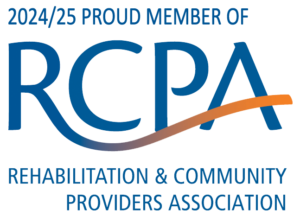The Stages of Life
Individuals with spina bifida can lead very active lives, work, socialize, get married, have children and find fulfillment in a broad range of areas. While each individual is different, children with spina bifida can be expected to go through all of the same developmental stages that children without spina bifida do. However, they may experience additional challenges directly related to the type of spina bifida that they have and the severity of their impairment.
Spina bifida is not a progressive condition and does not worsen as an individual ages. However, the health issues faced by a person with spina bifida tend to vary with age. What is common in a young child may not be prevalent in an adult with spina bifida and the impact of these health issues is not the same throughout the lifespan.
The stages of development for a child with spina bifida can be broken down into age groups beginning with birth and continuing into adulthood. Just as all children learn to walk and talk, go through puberty and experience a growing need for independence at different ages, so do children with spina bifida. Thus, some physical and emotional developmental areas overlap and blend and there is no measuring stick for developmental success.
Potential Topics:
- Expectations of Developmental Progression
- Developmental milestones that parents can anticipate
- Potential developmental delays
- (The Value of) Early Intervention Services
- How & Where to get these services
- Habilitation Issues
- Mobility
- Toileting
- Nutrition
- Medical Issues
- Unstable Hip
- Shunt Function & Malfunction
- Arnold-Chiari Malformation – a congenital anomaly of the brainthat occurs in almost all children born with both spina bifida and hydrocephalus, In infants, the most common symptoms are stridor and swallowing difficulties. In older children, upper limb weakness and breathing difficulties may occur. Patients may experience no symptoms or remain asymptomatic until early adulthood, at which point they will often experience severe headaches and neck pain. Fatigue, dizziness, vertigo, neuropathic pain, visual disturbances, difficulty swallowing, ringing in the ears, impaired fine motor skills, muscle weakness, and palpitations are other common symptoms. Some patients may go an entire lifetime without having noticeable symptoms. Or, symptoms can be minimal, then turn severe suddenly due to head trauma which alters the condition of the spine, brain, or cerebellar tonsils and begins to cause more difficulties. Once these “onset of symptoms” occurs, the most frequent treatment is decompression surgery, in which a neurosurgeon seeks to open the base of the skull and through various methods unrestrict CSF flow to the spine.
- Failure to Thrive
- Strabismus – also known as “heterotropia”, “squint”, “crossed eye”, “cockeyed’, “wandering eye”, or “wall eyed”, is a condition in which the eyes are not properly aligned with each other.
Potential Topics:
- Expectations of Developmental Progression
- A Developing Sense of Self
- Introduction to the Social World
- The Emergency of Sexual Identity
- Habilitation Issues (dressing skills & other ADLS )
- Wheelchairs & Transfers
- Promoting Ambulation
- Fine-Motor Function
- Expectations of Developmental Progression
- Visual Perceptual Function
- Medical Issues:
- Knees & Ankles
- Foot Problems
Potential Topics:
- Expectations of Developmental Progression
- Learning Abilities & Disabilities
- Common Learning Characteristics
- Attention Deficit Disorder (ADD)
- Habilitation Issues
- Gait Analyses
- PT
- Adaptive PE
- CIC
- Clean Intermittent Catheterization
- Pharmacological Management of Incontinence (Managing incontinence with the aid of prescription drugs)
- Management of the Neurogenic Bowel
- Gait Analyses
- Medical Issues
- Growth & Growth Problems
- Precocious Puberty – Puberty is the period in life when the body changes rapidly and develops reproductive capability. Precocious puberty is the development of body characteristics that normally occur during puberty before the age of 8 (girls) or 9 (boys). Children (of both sexes) with early sexual development are more likely to have psycho-social problems. Children and adolescents generally want to be the same as their peers, and early sexual development can make them appear “different”. This can result in self-esteem problems, depression, acting out at school and home, and alcohol and illegal substance abuse. (National Library of Medicine)
- Nutrition
- Obesity Prevention
- Urinary Tract Infections
- Tethered Cord – Tethered spinal cord syndrome is a neurological disorder caused by tissue attachments that limit the movement of the spinal cord within the spinal column. These attachments cause an abnormal stretching of the spinal cord. The course of the disorder is progressive. In children, symptoms may include lesions, hairy patches, dimples, or fatty tumors on the lower back; foot and spinal deformities; weakness in the legs; low back pain; scoliosis; and incontinence. Tethered spinal cord syndrome may go undiagnosed until adulthood, when sensory and motor problems and loss of bowel and bladder control emerge. This delayed presentation of symptoms is related to the degree of strain placed on the spinal cord over time. Tethered spinal cord syndrome appears to be the result of improper growth of the neural tube during fetal development, and is closely linked to spina bifida. Tethering may also develop after spinal cord injury and scar tissue can block the flow of fluids around the spinal cord. Fluid pressure may cause cysts to form in the spinal cord, a condition called syringomyelia. This can lead to additional loss of movement, feeling or the onset of pain or autonomic symptoms. (National Library of Medicine)
- Detethering & Retethering
- Scoliosis Management
- Seizures
- Emotional Issues / Self-Esteem
Potential Topics:
- Expectations of Developmental Progression
- Developing one’s identity
- Separating from parents
- Learning about love, intimacy & sexuality
- Preparing for the world of work
- Habilitation Issues
- Mobility
- Accessibility
- Wheelchair Maintenance
- Driving & Transportation
- Medical Issues
- Transition to Adult Health Care services
- Weight Control & Exercise
- Osteoporosis Prevention
- Shunt Problems & Chiari Symptoms
- Spinal Cord Problems
- Urinary Track Infections
- Bladder & Kidney Stones
- Hypertension
- Renal Insufficiency
- Skin Injury & Pressure Sores
- Non-compliance
- Adjustment Problems – Confronting Disability
- Depression
- Learned Helplessness
Transition Services
Generally begin in 10th grade. The child may or may not be the same age as peers. High School education can continue until age 21 years
The more education you have, the more choices you have for work and career. Many people find that a high school education is not enough. You may want to consider an educational program after high school to prepare you for work and career:
- Vocational education (hands-on training in job skills such as word processing, hair dressing, car repair)
- Junior or community college
- Technical education (training programs lasting several months to several years leading to specialized skills such as drafting, dental assisting, or commercial photography)
- College or university
Students with disabilities are eligible for accommodations at most colleges, universities, and training programs. This is because Section 504 prohibits schools that receive any federal funding from discriminating against people with disabilities. Helpful accommodations might include a special parking permit, a tape recorder for class notes, or extra time for taking tests and completing assignments. You can find out about accessibility by:
- Calling the school or program you are considering
- Asking your guidance counselor
- Looking at resources in your public library, such as Colleges with Programs for Students with Learning Disabilities (published by Peterson’s Guides) or Survival Guide for college Students with ADD or LD by Kathleen G. Nadeau.
If you decide to continue your education after high school, you’ll have to decide whether to live at home or on campus. The advantages and disadvantages of each choice are basically the same for you as for anyone making this decision. For example, if you live at home, costs will be less. On the other hand, living on campus gives you the experience of being on your own.


